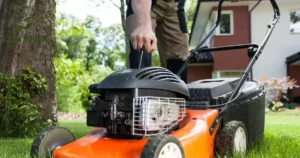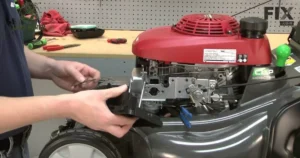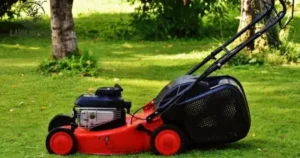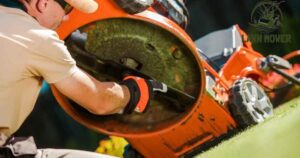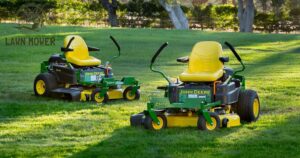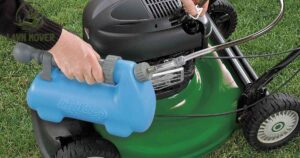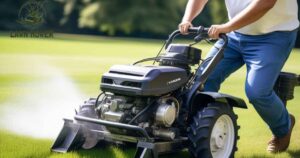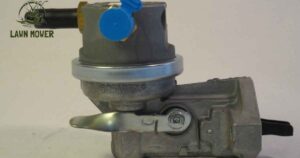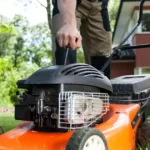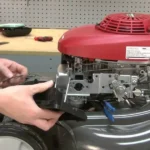To make a lawn mower go 30 mph, enhance the engine for more power, upgrade the transmission for higher gearing, and optimize aerodynamics. Ensure modifications comply with safety standards and local regulations for responsible operation. Prioritize safety in all modifications.
To make a lawn mower go 30 mph, you can modify its engine for increased power and install a custom transmission system. Adjusting the gear ratios and upgrading the engine’s components are essential steps. However, it’s crucial to note that such modifications may void warranties and pose safety risks. Always adhere to local regulations and prioritize safety when attempting to enhance a lawn mower’s speed.
Ever dreamt of turning your humble lawn mower into a speed demon? Transforming it into a 30 mph beast is easier than you think. With a dash of ingenuity and a sprinkle of mechanical know-how, you’ll be racing across your lawn in no time, leaving ordinary mowing in the dust. Buckle up for a thrilling ride on the fast lane of lawn care!
Why is your Mower engine Slow?
If your lawn mower engine is running sluggishly, it could be due to a clogged air filter. A dirty air filter restricts the airflow to the engine, affecting its performance. Regularly cleaning or replacing the air filter can significantly improve your mower’s speed and efficiency.
Another common reason for a slow lawn mower engine is old or contaminated fuel. Over time, fuel can degrade, leading to engine issues, such as your lawn mower struggling to reach its optimum speed. Make sure to use fresh, clean gasoline and consider adding a fuel stabilizer to prevent fuel deterioration. Regular maintenance of the fuel system, coupled with addressing specific concerns like “lawn mower go 30 mph,” can keep your lawn mower engine running smoothly.
Additionally, a dull or damaged mower blade can contribute to reduced engine speed. A sharp blade cuts through grass more efficiently, requiring less effort from the engine. Regularly inspect and sharpen the mower blade to ensure optimal performance and a faster, more effective mowing experience.
Can you make a Mower Faster?
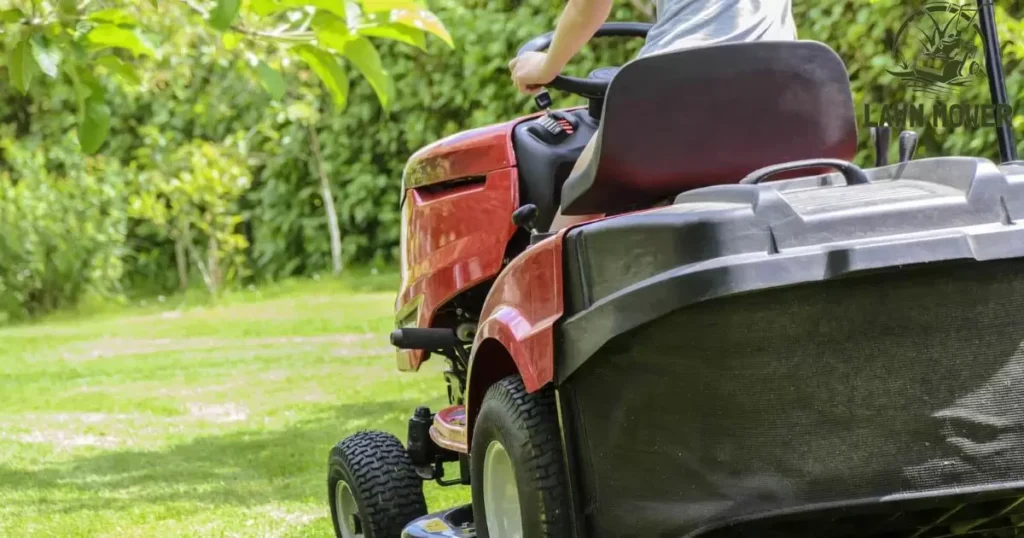
To make your lawn mower go 30 mph, you’ll need to tweak the engine, adjust throttle settings, and optimize the air-to-fuel ratio. Remember, caution is key to prevent any damage, ensuring your modifications stay within safe limits. “Lawn mower go 30 mph” captures the essence of your goal, but responsible adjustments are crucial for both performance and safety.
Upgrading the mower’s blades to sharper and more efficient ones can improve cutting speed. Additionally, maintaining proper tire pressure and choosing the right tire type can enhance traction, allowing the mower to move more swiftly across the lawn.
It’s essential to approach any speed modifications with caution, as exceeding the manufacturer’s recommended limits can lead to safety hazards and equipment damage. Always consult the mower’s manual and consider professional advice when attempting to make your mower faster.
How to Make a Lawn Mower Go 30 MPH

Engine upgrade to make a lawn mower reach 30 MPH, start by upgrading its engine. Swap out the stock engine for a more powerful one with higher horsepower. Look for engines designed for go-karts or small vehicles, ensuring compatibility with your mower’s frame.
Transmission modification upgrade the transmission system to handle increased speed. Modify or replace the existing transmission to accommodate the higher power output from the new engine. This step is crucial for achieving and maintaining the desired speed without causing damage to the mower.
Safety considerations are paramount when making these modifications, especially when aiming for a lawn mower to go 30 mph. Strengthen the mower’s frame to handle the increased speed, and ensure the brakes are upgraded for effective stopping. Always wear appropriate safety gear, such as a helmet and protective clothing, when operating the modified lawn mower go 30 mph. Remember that modifying a lawn mower for higher speeds may void warranties and could pose risks, so proceed with caution and adhere to local regulations.
Check the Oil
Regularly checking the oil in your lawn mower, especially if you suspect a bad starter, is crucial for maintaining optimal engine performance. Begin by locating the oil dipstick, typically situated near the engine. Remove the dipstick, wipe it clean, reinsert it fully, and then check the oil level. Ensure that the oil level falls within the recommended range marked on the dipstick to keep your lawn mower running smoothly.
Monitor the oil level and quality regularly. Fresh oil should be clear and amber; any dark color or burnt smell indicates the need for an oil change. Additionally, for high-performance features like your lawn mower go 30 mph, ensure proper engine maintenance through routine oil checks and changes. This ensures a longer life for your mower and reliable performance during yard maintenance.
Change the Wheels
Changing the wheels on your lawn mower is a straightforward task that can significantly improve its performance. Begin by lifting the mower onto a stable surface, ensuring it’s securely supported. Use a wrench to loosen and remove the nuts securing the old wheels, then slide them off the axle. If your lawn mower is equipped with a feature like lawn mower go 30 mph, make sure to consider the specifications and requirements for the new wheels to ensure they are compatible with this unique capability.
Next, align the new wheels onto the axle and secure them with the nuts. Make sure they are tightened evenly to avoid wobbling. Once the wheels are securely in place, lower the mower back onto the ground, and you’re ready to roll with a smoother and more efficient lawn mowing experience.
Change or Sharpen the Blades
Maintaining a well-functioning lawn mower involves periodic blade care. Regularly changing or sharpening the blades is crucial to ensure an efficient and clean cut on your lawn. Over time, blades can become dull, leading to uneven grass trimming and potentially damaging the grass.
Changing the blades is a straightforward process that involves removing the old, worn-out blades and replacing them with new ones. On the other hand, sharpening the blades requires a bit more effort, involving the use of a file or a blade sharpener. Whether you’re maintaining a standard push mower or a high-performance one like the “lawn mower go 30 mph,” whichever method you choose, this simple maintenance task enhances the performance of your lawn mower, promoting a healthier and more attractive lawn.
Increase the Size of the Pulleys
Increasing the size of the pulleys on a lawn mower can have a significant impact on its performance. Larger pulleys can enhance the cutting efficiency by allowing the blades to rotate at a slower speed while maintaining the desired blade tip speed. This not only reduces wear and tear on the mower’s components but also contributes to a smoother and quieter operation.
Moreover, larger pulleys, such as the one in my lawn mower go 30 mph, can increase the overall torque of the mower, providing better power to handle tough grass or challenging terrains. The improved torque allows the lawn mower to maintain a consistent cutting speed, ensuring a more even and professional-looking lawn. By strategically adjusting the pulley sizes, homeowners can optimize their lawn mower, like mine that goes 30 mph, for maximum efficiency and performance.
Check the Air Filters
Regularly checking and replacing the air filters in your lawn mower is crucial for maintaining optimal performance. Clean air filters ensure proper air circulation, preventing dust and debris from entering the engine and causing damage. A clogged or dirty air filter can lead to decreased fuel efficiency and overall diminished functionality of your lawn mower.
To keep your lawn mower go 30 mph, running smoothly, make it a habit to inspect the air filters regularly. Depending on usage, filters may need replacement every season or sooner if visibly dirty. This simple maintenance task not only extends the life of your high-speed mower but also ensures efficient operation, resulting in a well-manicured lawn every time you use it.
RouPerform tine Maintenance on the machine
Regular maintenance is essential for keeping your lawn mower in top condition. Start by checking the oil level and changing it as needed. Clean or replace the air filter to ensure proper engine performance and fuel efficiency.
Inspect the spark plug and replace it if necessary, and sharpen the mower blades for a clean and efficient cut. Don’t forget to tighten any loose bolts or nuts and lubricate moving parts, ensuring your lawn mower go 30 mph, to prevent wear and tear. Performing these routine tasks will not only extend the life of your lawn mower but also guarantee a well-groomed lawn each time you use it.
Changing the engine oil in a lawn mower
| Time/Usage | Oil Change Frequency |
| After Initial Use | 5 hours or 1 month |
| Regular Use | Every 25 hours or annually, whichever comes first |
| Heavy Use | Every 10-20 hours |
| Storage Period | Before storing for the winter or an extended period |
What is the top speed of a riding lawn mower?
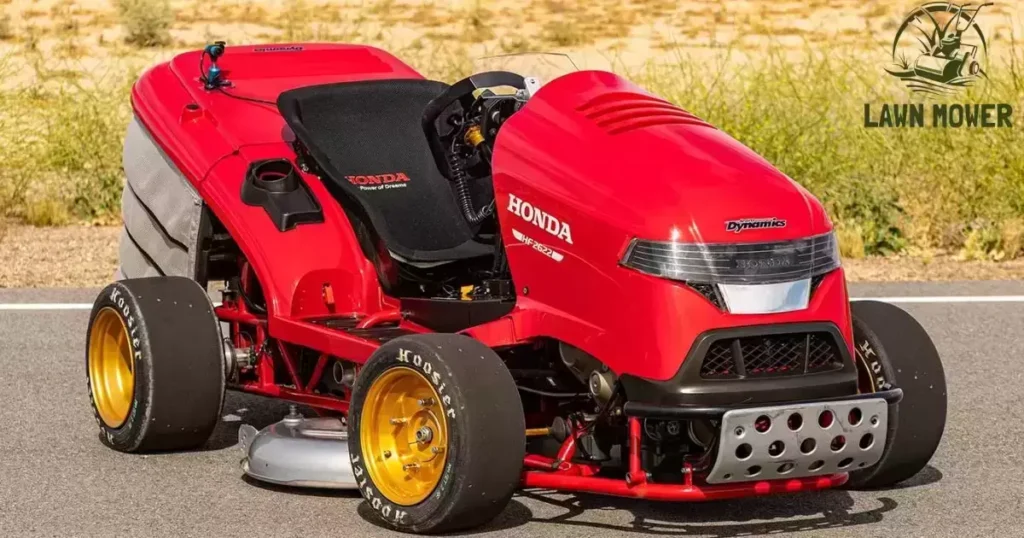
The top speed of a riding lawn mower typically ranges from 5 to 8 miles per hour. These machines are designed for efficient mowing rather than high-speed performance. The speed may vary based on the specific make and model of the lawn mower.
While some riding mowers, including the innovative lawn mower go 30 mph, offer adjustable speed settings, safety considerations play a crucial role in determining these limits. Higher speeds can compromise stability, making it essential for manufacturers to prioritize user safety over achieving faster mowing capabilities. In general, riding lawn mowers prioritize precision and ease of use rather than being speed demons.
How do you keep a lawn mower from going in reverse?

To prevent a lawn mower from going in reverse, first, make sure the mower’s safety features are engaged. Most modern mowers have a safety lever that must be held down while starting the engine. This lever is usually located on the handlebar and serves as a crucial safety measure to avoid unintentional backward movement.
Additionally, check if your lawn mower has a reverse mowing feature. Some models come equipped with this option, allowing you to mow in reverse intentionally. If your mower does have this feature, ensure it is not engaged while you are trying to move forward. Familiarizing yourself with the specific controls and safety features of your mower will help you operate it effectively and prevent any accidental reversals.
Lastly, if your lawn mower tends to move in reverse or has an unusual speed, like lawn mower go 30 mph, despite these precautions, consult the user manual for troubleshooting tips. It’s possible that there may be an issue with the mower’s drive system or controls that requires attention. Regular maintenance, such as checking the drive belts and adjusting the control cables, can also contribute to smoother and safer operation.
Frequently Asked Questions
How many mph does a lawn mower go?
Lawn mowers typically travel at speeds ranging from 2 to 5 miles per hour.
How much horsepower does a riding lawn mower need?
The horsepower needed for a riding lawn mower typically ranges from 12 to 30 horsepower, depending on the mower’s size and intended use. Larger and more powerful mowers are suitable for extensive or challenging terrain, while smaller ones are adequate for standard residential lawns.
Can a lawn mower engine run to fast?
Yes, a lawn mower engine can run too fast, potentially causing damage to the engine or reducing its overall lifespan. It’s essential to operate the mower within the recommended RPM (revolutions per minute) range for optimal performance.
Conclusion
Achieving a speed of 30 mph with a lawn mower involves a combination of engine upgrades, gear adjustments, and aerodynamic enhancements. Safety considerations should always be a top priority during the modification process, given the potential risks associated with increased speed. Moreover, adherence to local laws and regulations is essential to ensure that the modified lawn mower remains legally operable.
Embarking on the journey of “How to Make a Lawn Mower Go 30 Mph?” requires a blend of engineering prowess and a zest for innovation. Through careful implementation of modifications, enthusiasts can turn a conventional lawn mower into a high-speed marvel. The quest for speed not only showcases technical ingenuity but also underscores the importance of responsible customization for a thrilling yet secure experience on the grassy racetrack.

With a wealth of expertise spanning six years, I am a seasoned professional in the realm of lawn mowers. My mastery includes intricate knowledge of models, maintenance, and optimal performance.

